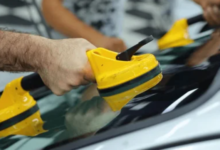Alváz és Üregvédelem: The Key to Long-Lasting Vehicle Durability

In automotive maintenance, there are aspects that are often forgotten but are absolutely critical to a vehicle’s long-term health and performance. One such vital component is alváz és üregvédelem, which translates from Hungarian to underbody and cavity protection. Though these protective measures are hidden beneath the car’s polished surface, their role in preventing corrosion, wear, and structural damage cannot be overstated.
This article will explore everything you need to know about alváz és üregvédelem including what it is, why it matters, how it’s done, and when it should be applied. Whether you are a seasoned car owner, a new driver, or an automotive professional, understanding this protective process is essential for extending the lifespan of your vehicle.
What is Alváz és Üregvédelem?
Alváz refers to the underbody or chassis of a vehicle, which includes the frame, suspension components, wheel wells, and other parts that lie beneath the vehicle. These areas are constantly exposed to road debris, water, salt, mud, and other contaminants.
These areas are highly prone to moisture accumulation and rust formation due to their closed-off nature and poor air circulation.
Together, alváz és üregvédelem comprises a full spectrum anti-corrosion strategy to shield both the visible and hidden parts of a vehicle from rust and environmental damage.
See also: Tech-Enabled Health & How It’s Changing Care
Why Alváz és Üregvédelem is Important
1. Combat Rust and Corrosion
Rust is the enemy of any metal component. When left unchecked, it can weaken your car’s frame and compromise safety. Road salt, rain, and snow are major rust contributors, especially in colder climates.
2. Protect Structural Integrity
If rust spreads in these areas, it can cause structural weakening, leading to expensive repairs and safety risks.
3. Increase Vehicle Lifespan
A well-protected undercarriage and cavity structure will help your vehicle remain roadworthy for a much longer period. Investing in alváz és üregvédelem now can delay the need for premature replacements.
4. Maintain Resale Value
Buyers are more inclined to purchase used cars that show no signs of rust, particularly in markets where corrosion is common. Documented underbody and cavity protection can significantly boost resale prices.
Risks of Neglecting Alváz és Üregvédelem
- Rapid corrosion in structural parts
- Water intrusion into the cabin
- Increased maintenance costs
- Suspension system damage
- Decreased safety in case of accidents
How Alváz és Üregvédelem is Performed
Step 1: Inspection and Cleaning
Technicians begin by inspecting the vehicle’s underbody and cavities. Any existing rust is cleaned or treated with rust converters. Dirt, mud, and grease are removed using high-pressure washers or degreasers.
Step 2: Drying
After cleaning, the vehicle must be completely dried. Moisture left behind can interfere with adhesion and may trap water under protective coatings.
Step 3: Cavity Protection (Üregvédelem)
Access holes (factory-made or drilled) allow spray wands to reach deep into the vehicle’s internal cavities. A wax- or oil-based anti-corrosion agent is applied evenly inside the panels.
Step 4: Underbody Protection (Alvázvédelem)
layer shields the metal from water, salt, gravel, and other hazards.
Step 5: Sealing and Finishing
Access holes are sealed with rubber plugs, and the final coating is inspected for uniformity and coverage.
Materials Used in Alváz és Üregvédelem
Wax-Based Products
Long-lasting and highly water-resistant, these are often preferred for both underbody and cavity protection.
Rubberized Coatings
Ideal for the underbody, these coatings also provide soundproofing benefits in addition to rust prevention.
Lanolin-Based Products
Eco-friendly and effective, lanolin sprays are gaining popularity for their excellent adhesion and rust prevention capabilities.
Best Time to Apply Alváz és Üregvédelem
Before Winter
Salt on icy roads is one of the biggest contributors to undercarriage and cavity corrosion.
After Buying a New Vehicle
New cars may come with minimal factory protection. Reinforcing this early on ensures long-term corrosion resistance.
During Annual Maintenance
Including underbody and cavity protection in your yearly maintenance routine helps to detect and fix early rust signs before they spread.
DIY vs. Professional Application
DIY Pros:
- More cost-effective
- Flexible schedule
- Good for maintenance and touch-ups
DIY Cons:
- Incomplete coverage risk
- Limited access to high-quality materials
- Lack of inspection tools
Professional Pros:
- Comprehensive protection
- Industrial-grade equipment
- Expert knowledge of vehicle structure
Professional Cons:
- Higher initial cost
- Time commitment
While DIY applications can be sufficient for maintenance, professional alváz és üregvédelem is recommended for full protection and peace of mind.
Common Myths Debunked
“Only Old Cars Need It”
Rust starts as early as the first year in harsh conditions. New vehicles benefit immensely from early protection.
“Factory Protection is Enough”
Most manufacturers provide minimal corrosion resistance. Supplementing with aftermarket products offers better longevity.
“It’s Only for Cold Climates”
Coastal areas and humid regions also experience high rates of rust due to salt in the air and constant moisture.
Conclusion
In conclusion, alváz és üregvédelem is not just an optional add-on — it’s a necessity for anyone who wants their vehicle to last. This powerful duo of underbody and cavity protection guards against rust, maintains structural integrity, and adds long-term value to your vehicle.
Whether you’re driving in icy mountain regions, coastal towns, or muddy rural roads, alváz és üregvédelem is your best defense against one of a car’s most silent and destructive enemies: corrosion. Don’t wait until rust shows its ugly face. Take action today and give your car the protection it truly deserves.






